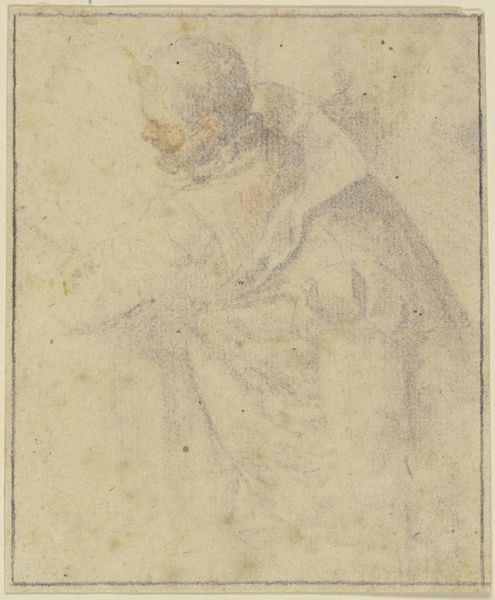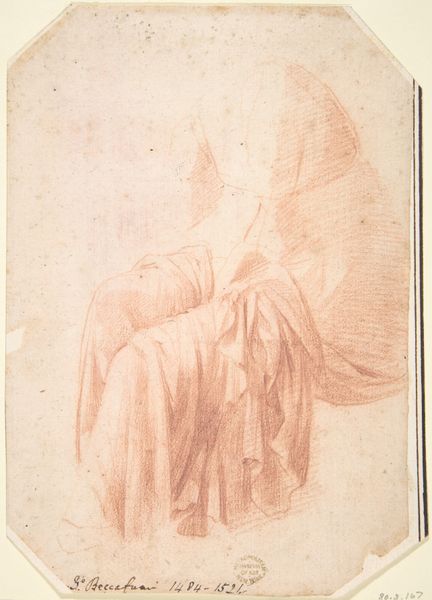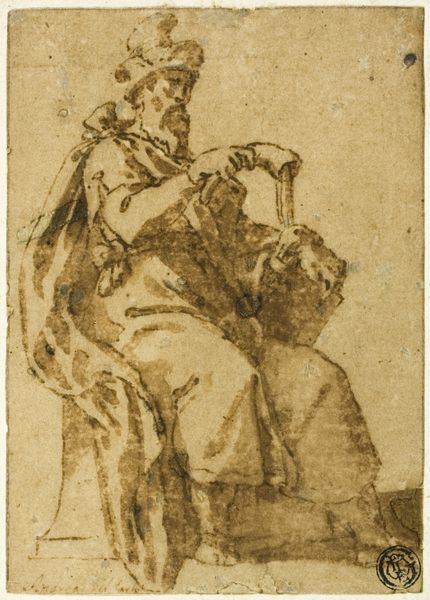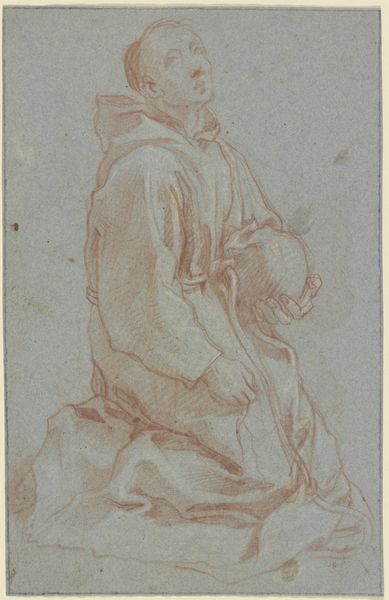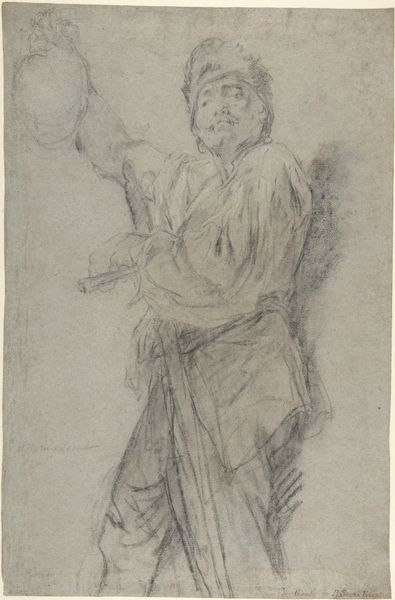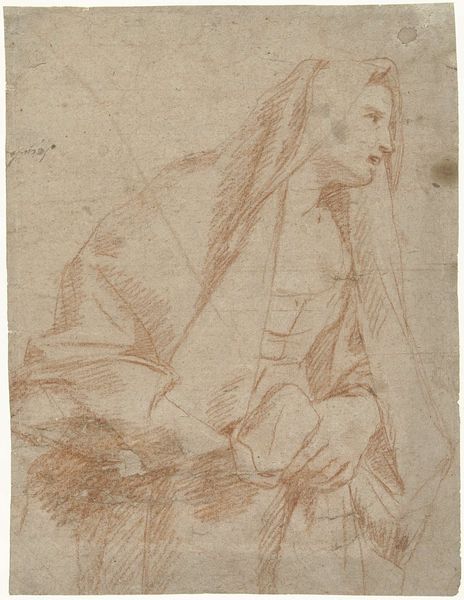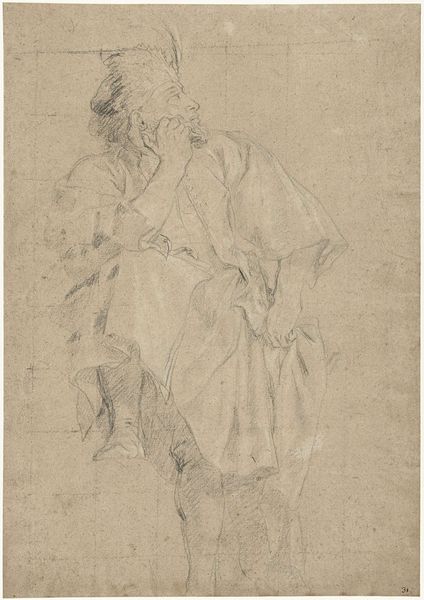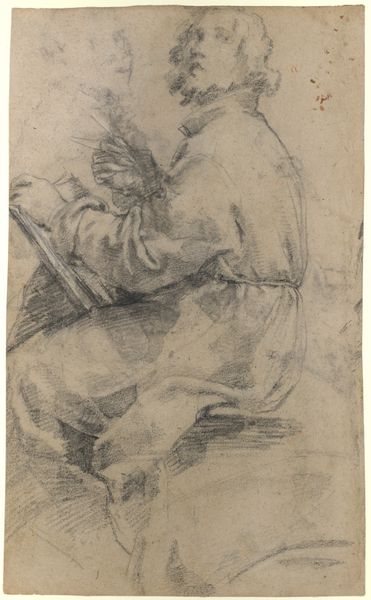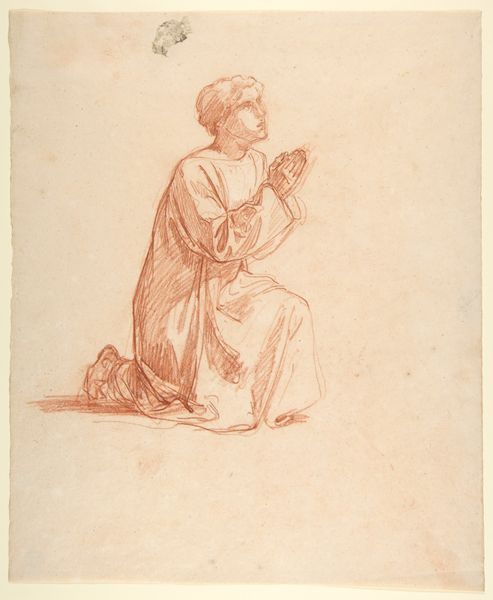
Halbfigur eines Mönches im Profil nach links, mit Kapuze und aufgeschlagenem Buche
0:00
0:00
drawing, red-chalk, paper, dry-media, chalk, charcoal, pastel, frottage
#
drawing
#
baroque
#
red-chalk
#
pencil sketch
#
charcoal drawing
#
paper
#
dry-media
#
chalk
#
portrait drawing
#
watercolour illustration
#
charcoal
#
pastel
#
frottage
Copyright: Public Domain
Editor: Here we have, “Half-Figure of a Monk in Profile to the Left, with Hood and Open Book," by Francesco Vanni, a red chalk drawing on paper. It feels quite intimate, like a fleeting glimpse into a private moment of study. What can you tell me about it? Curator: Well, it’s a drawing intended as a study, revealing Vanni's working methods. The choice of a monk as a subject also gives us insight into the Church's prominent role as a patron of the arts during the Baroque period. Do you see any visual cues of the influence of institutional structures of that time? Editor: I suppose the very depiction of a religious figure points to the pervasive religious themes in art at the time, dictated in part by the church? Also, is it just me or does it seem like a quick sketch? Curator: Indeed! And its seemingly simple composition hides its cultural relevance. Think about the distribution of power – the church had both the means and the motive to influence art production, thereby shaping the visual landscape of society. It reflects not only religious devotion, but the church’s role in defining what was important in art. Does this influence the work's accessibility, or its purpose? Editor: So, this study not only displays the artist's skill but is also a byproduct of that patronage system and reveals how the church propagated itself through these images. What does the medium reveal about the Baroque artistic environment? Curator: The use of red chalk itself is interesting because of its association with preparatory drawings, demonstrating the role of planning and academic practice even within a supposedly divinely-inspired art form. Did Vanni perhaps also employ frottage on this paper? Editor: Oh, now I see, possibly adding texture through frottage and suggesting it as an instructional model with a subtle religious subtext. Interesting. Curator: Precisely! Examining these influences helps us appreciate its artistic achievements, as well as how cultural institutions actively molded artistic output.
Comments
No comments
Be the first to comment and join the conversation on the ultimate creative platform.
